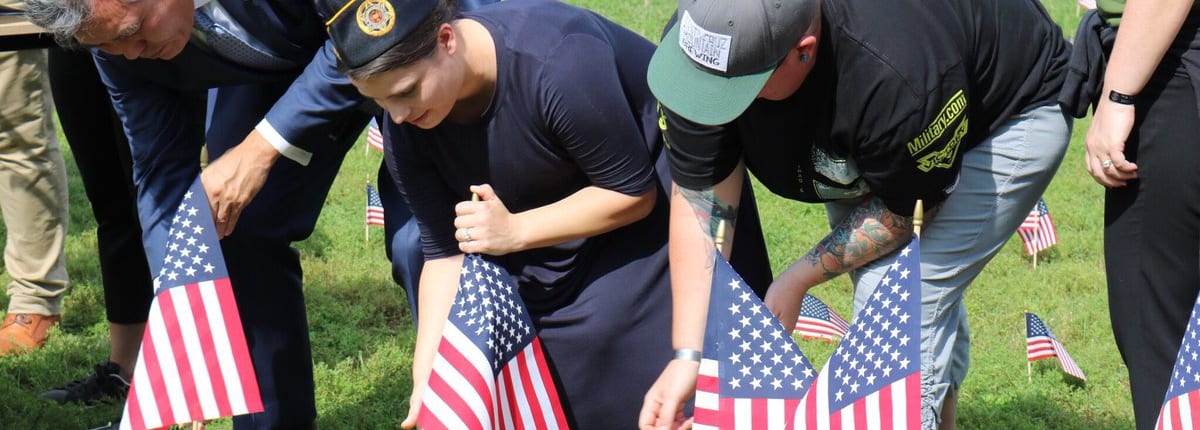
Oct. 4, 5,520 flags were planted on the National Mall to raise awareness about the veterans we have lost to suicide in 2018 so far. The event was mobilized by Iraq & Afghanistan Veterans of America (IAVA).
By Sabrina Fine, Communications Intern
He was blindfolded, talking and able to piece together an AR-15 rifle. You may remember seeing Missouri Democrat Jason Kander’s viral ad for the U.S. Senate in September 2016. Kander’s experiences in the military are also what have recently caused him to drop out of the race for Mayor of Kansas City, Missouri.
The Jewish former Army Intelligence officer left the military 11 years ago. In his ad he spoke about his time in Afghanistan and his support of background checks, and then he challenged his opponent Roy Blunt (R-Mo.) to attempt to piece together a rifle blindfolded.
The video asserts that Kander’s military experience and knowledge of firearms make him qualified to discuss the intricacies of the 2nd Amendment. Kander stated that while he supported the 2nd Amendment, he also supported background checks to keep weapons out of terrorist hands. Kander is considered a new young face in the Democratic Party with presidential aspirations. However, for now, his political career is on hold.
“I can’t work on myself and run a campaign the way I want to at the same time, so I’m choosing to work on my depression,” said Kander in a personal statement.

Jason Kander
Kander is certainly not alone. According to the U.S. Department of Veterans Affairs (VA), 11-20% of veterans who served in Operations Iraqi Freedom or Operation Enduring Freedom have post-traumatic stress disorder (PTSD) in any given year. Twelve percent for Gulf War veterans and 15 percent of Vietnam veterans have had PTSD sometime in their life.
According to VA research, veterans often feel extreme guilt for things they experience in combat. PTSD is rampant in veterans and studies show a link between PTSD and suicide.
“PTSD and traumatic brain injury (TBI) diagnosis have been associated with suicide,” said Sheila Berg, the Woman in the Military Committee chairwoman.
On Oct. 4th, together with the Iraq and Afghanistan Veterans of America (IAVA), Anna Selman, the former JWV Public Relations and Programs Coordinator participated in planting flags for veterans that have died by suicide. They planted 5520 flags on the mall in DC.
“I think we often talk about PTSD in terms of deployment but you don’t have to be deployed to be in a stressful environment,” said Selman.
There are many causes of hostile work environments in the military. Often Iraq and Afghanistan service members return to their command with PTSD and sometimes while they are dealing with their issues, it becomes stressful for the people around them.
Also, many suicides occur after their military service concludes, when veterans feel as civilians they have lost their sense of purpose.
“For those of us that come from families of Holocaust survivors, we know that Jews have a long history of treating PTSD even before the term came into use,” said Selman. She also mentions Viktor Frankl, a post Holocaust scholar’s approach.
“Viktor’s approach to treating traumatic events was to give everything meaning, even one’s painful trials,” said Selman.
By Kander telling the American public about challenges he is facing, he believes he may be on the road to recovery.
“I’m done hiding this from myself and from the world,” said Kander. “When I wrote in my book that I was lucky to not have PTSD, I was just trying to convince myself. And I wasn’t sharing the full picture. I still have nightmares. I am depressed.”
Kander is receiving services at the VA in Kansas City. Kander also wrote that he hoped his struggle with PTSD would inspire others to seek help for similar issues.
Volume 72. Number 4. Winter 2018

